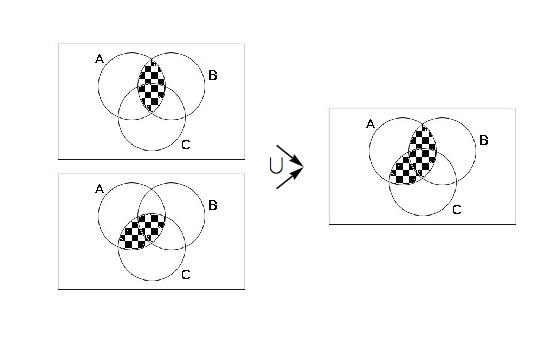Commentary; We again ask ourselves: What are we trying to prove? What types of objects are we dealing with? We realize that we wish to prove two facts: (a)
\(LHS\subseteq RHS\text{,}\) and (b)
\(RHS\subseteq LHS\text{.}\)
To prove part (a), and similarly part (b), we’ll begin the same way. Let
\(\_\_\_ \in LHS\) to show
\(\_\_\_ \in RHS\text{.}\) What should
\(\_\_\_\) be? What does a typical object in the
\(LHS\) look like?
Now, on to the actual proof.
(a)
\(A\times (B\cap C)\subseteq (A\times B)\cap (A\times C)\text{.}\)
Let \((x, y) \in A\times (B\cap C)\text{.}\)
\begin{equation*}
\begin{split}
(x, y) \in A\times (B\cap C) &\Rightarrow x \in A \textrm{ and } y \in (B\cap C)\\
&\quad \textrm{ Why? }\\
&\Rightarrow x \in A \textrm{ and }(y \in B\textrm{ and } y \in C)\\
&\textrm{ Why? }\\
&\Rightarrow (x \in A \textrm{ and } y \in B) \textrm{ and } (x \in A \textrm{ and } y \in C)\\
&\quad \textrm{ Why? }\\
&\Rightarrow (x, y) \in (A\times B) \textrm{ and } (x, y) \in (A \times C)\\
&\quad \textrm{ Why? }\\
&\Rightarrow (x, y) \in (A\times B) \cap (A\times C)\\
&\quad \textrm{ Why? }
\end{split}
\end{equation*}
(b)
\((A\times B)\cap (A\times C)\subseteq A\times ( B\cap C)\text{.}\)
Let \((x, y) \in (A\times B) \cap (A\times C)\text{.}\)
\begin{equation*}
\begin{split}
(x, y) \in (A\times B)\cap (A\times C) &\Rightarrow (x, y) \in A\times B\textrm{ and } (x, y) \in A\times C\\
&\quad \textrm{ Why? }\\
&\Rightarrow (x \in A \textrm{ and } y \in B) \textrm{ and } (x \in A \textrm{ and } y \in C)\\
&\quad \textrm{ Why? }\\
&\Rightarrow x \in A \textrm{ and } (y \in B\textrm{ and } y \in C)\\
&\quad \textrm{ Why? }\\
&\Rightarrow x \in A\textrm{ and } y \in (B\cap C)\\
&\quad \textrm{ Why? }\\
&\Rightarrow (x, y) \in A \times (B\cap C)\\
&\quad \textrm{ Why? }
\end{split}
\end{equation*}

